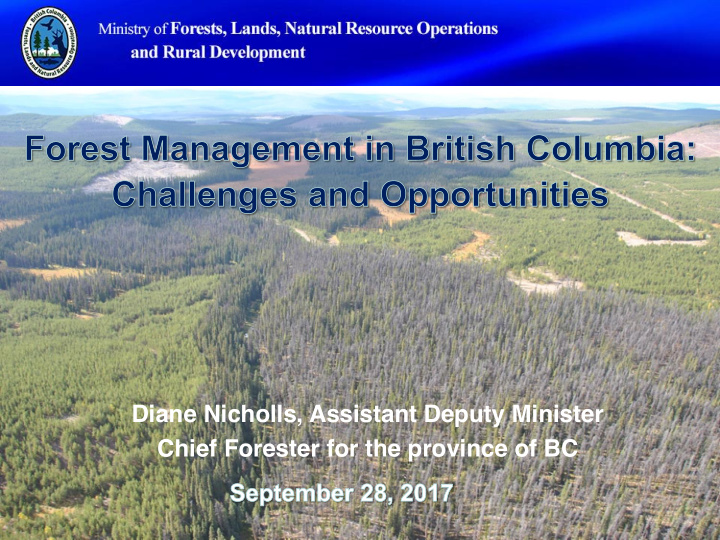



Click here to add text Click here to add text Diane Nicholls, Assistant Deputy Minister Chief Forester for the province of BC
BC landscape – diversity 1. 2. Drivers of Change � Climate � First Nations � Insects � Wildfire 3. Mitigation Strategies for Reducing Risk � Forest Carbon Initiative � Forests For Tomorrow � Seed
o 488 bird species, • ~50,000 – 70,000 invertebrates o 142 mammal species • 1138 species of vertebrates o 18 reptile species, • 1059 non-vascular plants o 22 amphibian species, • 3391 vascular plants o 83 freshwater fish species • 578 lichens o 368 saltwater fish species Kristiina Ovaska Samuel Brinker 4
Total area of B.C.: 95 million ha Forested Land: 57 million ha Timber Harvesting Land Base: 22 million ha Annual area harvested: ~ 200,000 ha
Forest Carbon Initiative (FCI) BC’s Forest Carbon targets • 2030: reduce GHGs from BC forests by 3 Mt/yr (federal) • 2050: reduce GHGs by 11 Mt/yr (provincially legislated) FCI • enhance forest carbon sequestration • avoid forest carbon emissions • forest carbon management includes: rehabilitation, reforestation, fertilization and utilization • research, innovation and funding for activities that would not otherwise occur (e.g non-timber harvesting land base)
Forests for Tomorrow Program Since 2005: • Surveyed: 1.8M ha • Site prepared: 33,000 ha • Planted 113,000 ha with 157M seedlings • 45% Class A seed • Spaced: 10,300 ha • Fertilized: 142,000 ha • Brushed: 8,800 ha
Seed for Reforestation Provincial Objectives : 1) Select seed for reforestation • 93 tree seed orchards • 750 - 2500kg of seed annually • 150 million select seed sown 2) Genetic gain • average 17% 3) Climate-based seed transfer 4) Use of pest-resistant seed 5) Genetic conservation
Recommend
More recommend